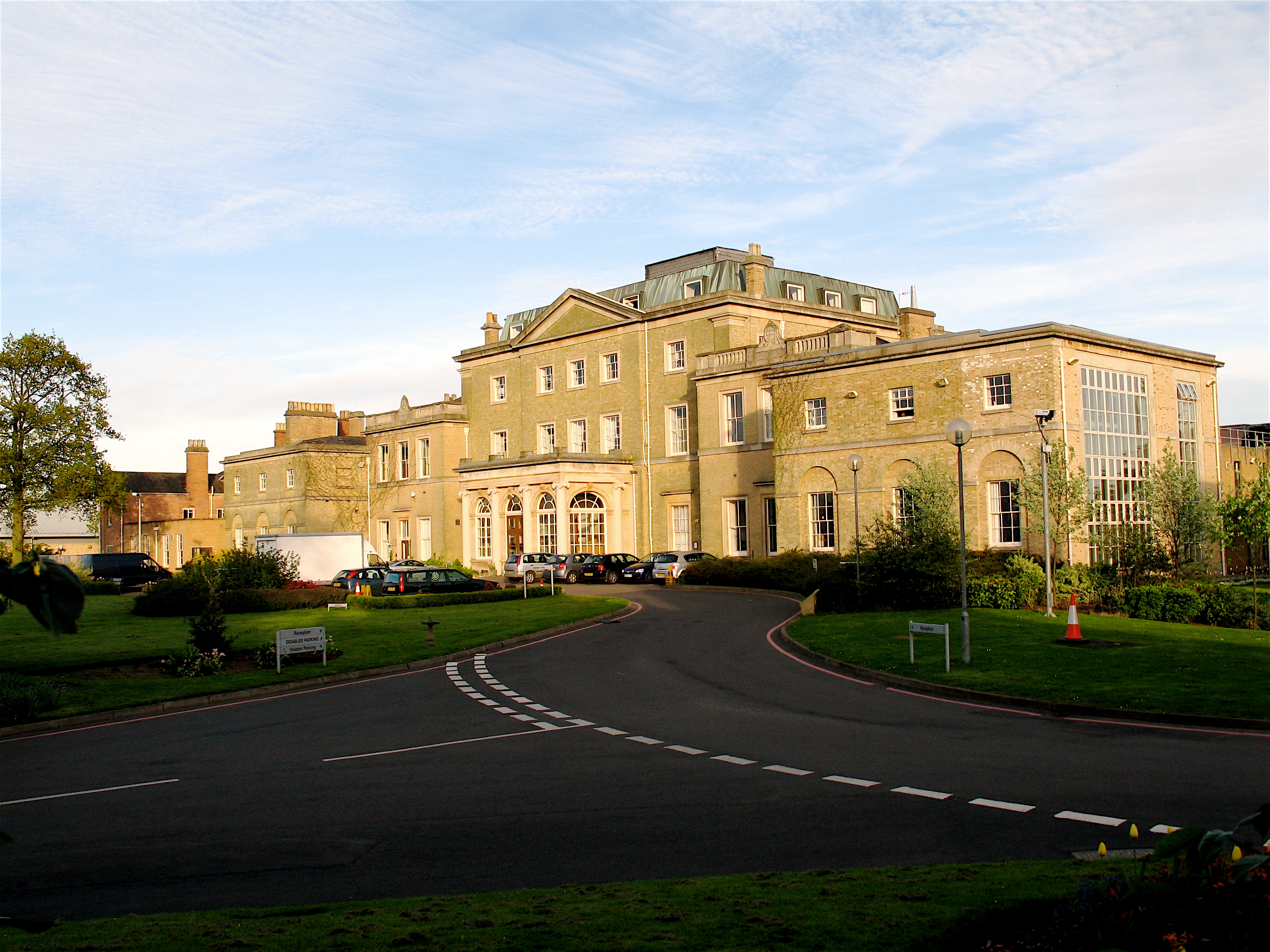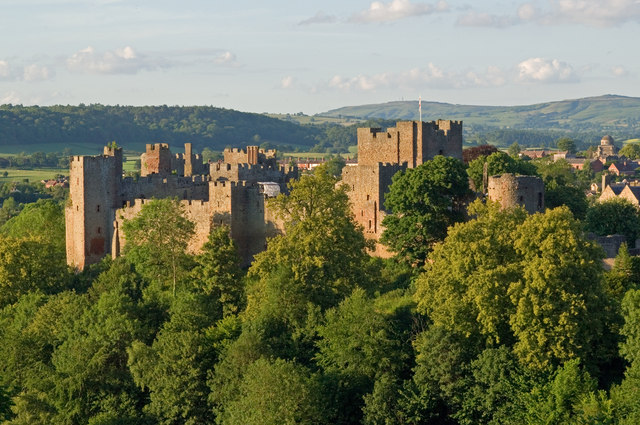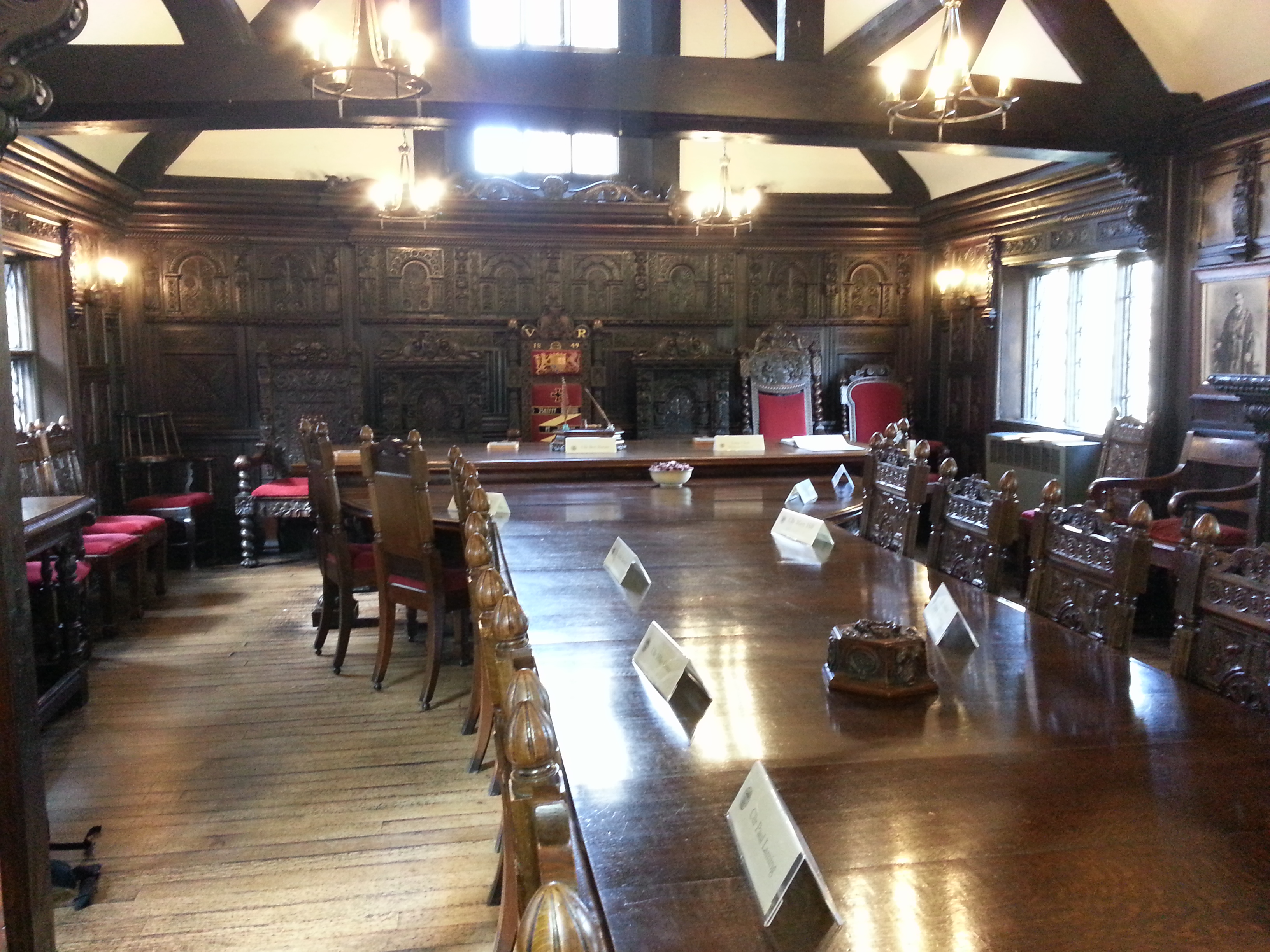|
Shropshire Constabulary
Shropshire Constabulary was the territorial police force responsible for policing rural Shropshire in central England from 1840 until 1967, when it became part of West Mercia Constabulary. History The Shropshre Constabulary was formed along with borough forces in the towns of Shrewsbury, Bridgnorth, Ludlow, Much Wenlock and Oswestry. In the early years they were known as ‘Paddy Mayne’s grasshoppers’ and rabbits because the first Chief Constable was Irish and the constables wore green uniforms. The headquarters were at 27, Swan Hill, Shrewsbury. In 1947 the Shropshire Constabulary absorbed Shrewsbury Borough Constabulary. On 1 October 1967 the Shropshire Constabulary was amalgamated with the Worcestershire Constabulary, Herefordshire Constabulary and Worcester City Police to form the West Mercia Constabulary, later the West Mercia Police. Chief Constables * 1840–1859 : Captain Dawson Mayne (first Chief Constable of Shropshire) * 1859–1864 : Captain Philip Henry Crampton ... [...More Info...] [...Related Items...] OR: [Wikipedia] [Google] [Baidu] |
West Mercia Constabulary
West Mercia Police (), formerly the West Mercia Constabulary, is the territorial police force responsible for policing the counties of Herefordshire, Shropshire (including Telford and Wrekin) and Worcestershire in England. The force area covers making it the fourth largest police area in England and Wales. The resident population of the area is 1.19 million Its name comes from the ancient kingdom of Mercia. The force represents a diverse range of policing environments from densely populated urban areas on the edge of Birmingham as well as Telford, Shrewsbury, and Worcester, to sparsely populated rural areas, such as Herefordshire, which remains an important part of the force's responsibility. As of September 2017, the force has a workforce of 2,017 police officers, 223 police community support officers, 1541 police staff and 388 members of the special constabulary. The force has its headquarters in the historical manor house and grounds of Hindlip Hall on the outskirts of W ... [...More Info...] [...Related Items...] OR: [Wikipedia] [Google] [Baidu] |
Shrewsbury
Shrewsbury ( , also ) is a market town, civil parish, and the county town of Shropshire, England, on the River Severn, north-west of London; at the 2021 census, it had a population of 76,782. The town's name can be pronounced as either 'Shrowsbury' or 'Shroosbury', the correct pronunciation being a matter of longstanding debate. The town centre has a largely unspoilt medieval street plan and over 660 listed buildings, including several examples of timber framing from the 15th and 16th centuries. Shrewsbury Castle, a red sandstone fortification, and Shrewsbury Abbey, a former Benedictine monastery, were founded in 1074 and 1083 respectively by the Norman Earl of Shrewsbury, Roger de Montgomery. The town is the birthplace of Charles Darwin and is where he spent 27 years of his life. east of the Welsh border, Shrewsbury serves as the commercial centre for Shropshire and mid-Wales, with a retail output of over £299 million per year and light industry and distribution centre ... [...More Info...] [...Related Items...] OR: [Wikipedia] [Google] [Baidu] |
Bridgnorth
Bridgnorth is a town in Shropshire, England. The River Severn splits it into High Town and Low Town, the upper town on the right bank and the lower on the left bank of the River Severn. The population at the 2011 Census was 12,079. History Bridgnorth is named after a bridge over the River Severn, which was built further north than an earlier bridge at Quatford. The earliest historical reference to the town is in 895, when it is recorded that the Danes created a camp at ''Cwatbridge''; subsequently in 912, Æthelfleda constructed a mound on the west bank of the River Severn, or possibly on the site of Bridgnorth Castle, as part of an offensive against the Danes. Earliest names for Bridgnorth include Brigge, Brug and Bruges, all referring to its position on the Severn. After the Norman conquest, William I granted the manor of Bridgnorth to Roger de Montgomerie. The town itself was not created until 1101, when Robert of Bellême, 3rd Earl of Shrewsbury, the son of Roger de M ... [...More Info...] [...Related Items...] OR: [Wikipedia] [Google] [Baidu] |
Ludlow
Ludlow () is a market town in Shropshire, England. The town is significant in the history of the Welsh Marches and in relation to Wales. It is located south of Shrewsbury and north of Hereford, on the A49 road which bypasses the town. The town is near the confluence of the rivers Corve and Teme. The oldest part is the medieval walled town, founded in the late 11th century after the Norman conquest of England. It is centred on a small hill which lies on the eastern bank of a bend of the River Teme. Situated on this hill are Ludlow Castle and the parish church, St Laurence's, the largest in the county. From there the streets slope downward to the rivers Corve and Teme, to the north and south respectively. The town is in a sheltered spot beneath Mortimer Forest and the Clee Hills, which are clearly visible from the town. Ludlow has nearly 500 listed buildings, including examples of medieval and Tudor-style half-timbered buildings. The town was described by Sir John Betjeman ... [...More Info...] [...Related Items...] OR: [Wikipedia] [Google] [Baidu] |
Much Wenlock
Much Wenlock is a market town and parish in Shropshire, England, situated on the A458 road between Shrewsbury and Bridgnorth. Nearby, to the northeast, is the Ironbridge Gorge, and the new town of Telford. The civil parish includes the villages of Homer (1 mile north of the town), Wyke (2 miles northeast), Atterley (2 miles southeast), Stretton Westwood (2 miles southwest) and Bourton (3 miles southwest). The population of the civil parish, according to the 2001 census, was 2,605, increasing to 2,877 at the 2011 Census. Notable historic attractions in the town are Wenlock Priory and the Guildhall. The Wenlock Olympian Games established by William Penny Brookes in 1850 are centred in the town. Brookes is credited as a founding father of the modern Olympic Games, and one of the London 2012 Summer Olympics mascots was named Wenlock after the town. Toponym Much Wenlock is historically the chief town of the ancient borough of Wenlock. "Much" was added to distinguish it from ... [...More Info...] [...Related Items...] OR: [Wikipedia] [Google] [Baidu] |
Oswestry
Oswestry ( ; ) is a market town, civil parish and historic railway town in Shropshire, England, close to the Welsh border. It is at the junction of the A5, A483 and A495 roads. The town was the administrative headquarters of the Borough of Oswestry until that was abolished in 2009. Oswestry is the third-largest town in Shropshire, following Telford and Shrewsbury. At the 2011 Census, the population was 17,105. The town is five miles (8 km) from the Welsh border and has a mixed English and Welsh heritage. Oswestry is the largest settlement within the Oswestry Uplands, a designated natural area and national character area. Toponym The name ''Oswestry'' is first attested in 1191, as ''Oswaldestroe''. This Middle English name transparently derives from the Old English personal name Ōswald and the word ''trēow'' ('tree'). Thus the name seems once to have meant 'tree of a man called Ōswald'.A. D. Mills, ''A Dictionary of English Place Names'' (Oxford: Oxford Universit ... [...More Info...] [...Related Items...] OR: [Wikipedia] [Google] [Baidu] |
Worcestershire Constabulary
Worcestershire Constabulary was the territorial police force responsible for policing rural Worcestershire in central England from 1839 until 1967, when it became part of West Mercia Constabulary. History The Worcestershire Constabulary was formed in 1839, along with borough forces in the towns of Worcester, Evesham, Kidderminster, Dudley, Bewdley and Droitwich. The first headquarters was a three storey house at 15 Britannia Square, Worcester. In 1946 they moved into Hindlip Hall. In 1947 the Worcester Constabulary absorbed Kidderminster Borough Constabulary. On 1 October 1967 the Worcestershire Constabulary was amalgamated with the Shropshire Constabulary, Herefordshire Constabulary and Worcester City Police to form the West Mercia Constabulary, later the West Mercia Police. See also * |
Herefordshire Constabulary
Herefordshire Constabulary was the Home Office police force for the county of Herefordshire, England, until 1967. The headquarters were at Brockington House, Hafod Road, Hereford. The force was formed in 1857. Following the Police Act 1946 the Hereford Borough Police merged with the Herefordshire force. In 1965, the county force had an establishment of 257 and an actual strength of 221, making it the second smallest county police force in England after West Suffolk Constabulary.''The Thin Blue Line'', Police Council for Great Britain Staff Side Claim for Undermanning Supplements, 1965 On 1 October 1967, the force amalgamated with Worcestershire Constabulary, Shropshire Constabulary and Worcester City Police to form West Mercia Constabulary West Mercia Police (), formerly the West Mercia Constabulary, is the territorial police force responsible for policing the counties of Herefordshire, Shropshire (including Telford and Wrekin) and Worcestershire in England. The force area ... [...More Info...] [...Related Items...] OR: [Wikipedia] [Google] [Baidu] |
Llewellyn William Atcherley
Major-General Sir Llewellyn William Atcherley, (1 March 1871 – 17 February 1954) was a Canadian-born officer in the British Army and Chief Constable of West Yorkshire Constabulary. He was born in Elizabethtown, now Brockville, Ontario to Lieutenant-Colonel Francis Topping Atcherley and educated in England at Oundle School. He joined the British Army and after training at the Royal Military College, Sandhurst (RMCS) became a junior officer in the East Lancashire Regiment. In 1894 he transferred to the Army Service Corps, with which he took part in the Ashanti Campaign of 1895. He was promoted to captain on 13 August 1898, and the following year went to South Africa for service in the Second Boer War from 1899 to 1902. For his service in this war, he received a brevet rank of major on 20 November 1900, and was noted for future staff employment. In 1905 he was promoted to the substantive rank of major, but left the Army in 1906 to become Chief Constable of Shropshire Constabu ... [...More Info...] [...Related Items...] OR: [Wikipedia] [Google] [Baidu] |
Anthony Tew
Anthony Martin Tew (24 August 1908 – 23 June 1987) was an English first-class cricketer and police officer. The son of E. W. Tew and his wife, Catherine Isabel Hawke (sister of Lord Hawke),Nephew of Lord Hawke Married. ''Leeds Mercury''. 9 September 1935. p. 5 he was born in August 1908 at Wigginton, Yorkshire. He was educated at Winchester College, before going up to Magdalen College, Oxford. While studying at Oxford, he made two appearances in first-class cricket for Oxford University in 1928, against Kent and the touring West Indians at Oxford. He scored 5 runs in his two matches, in addition to taking 3 wickets. After graduating from Oxford, he became a police officer. He served with Lincolnshire Constabulary, rising to the rank of inspector by 1946. He was appointed as chief constable of Shropshire Constabulary on 5 February 1946, however he resigned from the post just one day later for personal reasons and was succeeded by Douglas Osmond.New Police Chief Gives Up Pos ... [...More Info...] [...Related Items...] OR: [Wikipedia] [Google] [Baidu] |
Derby Telegraph
The ''Derby Telegraph'', formerly the ''Derby Evening Telegraph'', is a daily tabloid newspaper distributed in the Derby area of England. Stories produced by the Derby Telegraph team are published online under the Derbyshire Live brand. History In 1857, Richard Keene was publishing the ''Derby Telegraph'' every Saturday. His business was in the Irongate district of Derby. His family was to include Alfred John Keene who was a local painter whose work is displayed in the Derby Art Gallery. Another paper was first published in 1879 by Eliza Pike. It was known at the time as the ''Derby Daily Telegraph'' and was a four-page broadsheet which cost a halfpenny. Historical copies of the ''Derby Daily Telegraph'', dating back to 1879, are available to search and view in digitised form at The British Newspaper Archive. The first editor was W.J. Piper who stayed in the post until he died in 1918. He was succeeded by William Gilman who in 1927, saw the paper sold three times in a series ... [...More Info...] [...Related Items...] OR: [Wikipedia] [Google] [Baidu] |
Douglas Osmond
Sir Douglas Osmond (27 June 1914 – 20 April 2006) was the chief constable of Shropshire Constabulary and later Hampshire Constabulary. Biography Douglas Osmond was born in Bournemouth, the son of a schoolteacher mother and a father who was killed in action during the First World War. He was educated at local schools, and in 1932 won a Kitchener Scholarship to read Mathematics at University College London."Sir Douglas Osmond obituary". ''Daily Telegraph'', 28 April 2006Archivedfrom the original on 19 May 2006. Retrieved 19 January 2023. He joined the Metropolitan Police in 1935, where he rose to Inspector, before joining the Royal Navy during the Second World War. After the war, he returned to the police and was appointed as the Chief Constable of Shropshire, (now part of West Mercia Constabulary), in 1946. At 32, he was one of the youngest to have achieved this position in the United Kingdom. (The youngest was Sir Eric St Johnston who, in 1940 at the age of 29, was appointed ... [...More Info...] [...Related Items...] OR: [Wikipedia] [Google] [Baidu] |






